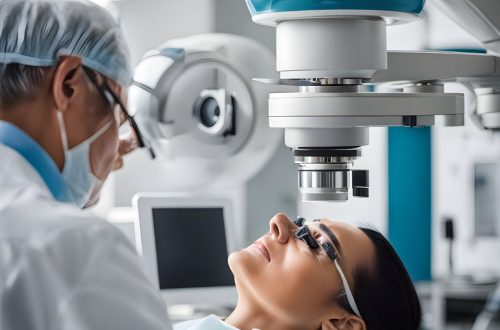When it comes to advanced eye care treatments in the USA, LASIK surgery has emerged as a popular option for those seeking vision correction. It’s vital to dive deep into the procedure, weighing its benefits and risks, to make an informed decision. This article provides a comprehensive insight into LASIK, drawing authoritative information from the American Academy of Ophthalmology.
What is LASIK Surgery?
LASIK, or Laser-Assisted In Situ Keratomileusis, is a procedure designed to improve vision by reshaping the cornea, the clear front part of the eye, using a laser. This reshaping allows light entering the eye to be correctly focused onto the retina, providing clearer vision without the need for glasses or contact lenses.
Benefits of LASIK Surgery
- Quick Recovery: Most patients experience improved vision within a day.
- Reduced Dependency on Glasses or Contact Lenses: Many achieve 20/20 vision or better after the procedure.
- Safe Procedure: With advancements in technology, the surgery has become safer with minimal complications.

Understanding Lasik: Benefits, Risks, And What To Expect
Risks Associated with LASIK
Like any medical procedure, there are potential risks involved in LASIK. These might include:
- Problems with night vision or seeing halos around lights.
- Undercorrections, overcorrections, or astigmatism.
- Dry eyes or reduced tear production.
- Corneal infection or scarring.
However, by choosing a top-rated optometrist in the USA and undergoing a thorough pre-surgery examination, these risks can be minimized.
What to Expect During the Procedure
The procedure itself is quick and generally painless. After the application of numbing drops, a protective flap is created on the cornea using a microkeratome or a femtosecond laser. The underlying cornea is then reshaped using an excimer laser, and the protective flap is repositioned. The entire procedure usually takes less than 30 minutes for both eyes.
Post-Surgery Care
Post-operative care is crucial for optimal eye health and ensuring the success of the surgery. Here are some tips:
- Avoid rubbing your eyes for the first few days.
- Wear sunglasses to protect against UV rays and excessive light.
- Attend all follow-up appointments to monitor healing and vision improvement.
- Stay alert to any common vision problems and consult your optometrist immediately if you notice any irregularities.
Is LASIK Right for You?
While LASIK offers numerous benefits, it might not be the ideal solution for everyone. Factors like the thickness of your cornea, your age, and any existing eye diseases can influence your eligibility. A detailed examination with an eye care professional is necessary to determine if LASIK or another vision correction option is right for you.

LASIK surgery has transformed the lives of many, offering clearer vision and freedom from corrective lenses. By understanding the procedure, its benefits, and associated risks, you can make an educated decision about your eye care. Remember, maintaining perfect vision with regular check-ups and being proactive about your eye health is key. For more information on LASIK and other advanced eye care treatments, visit the American Academy of Ophthalmology.
This article is intended for informational purposes only and should not replace professional medical advice. Always consult with an eye care specialist before making decisions about surgical procedures.










